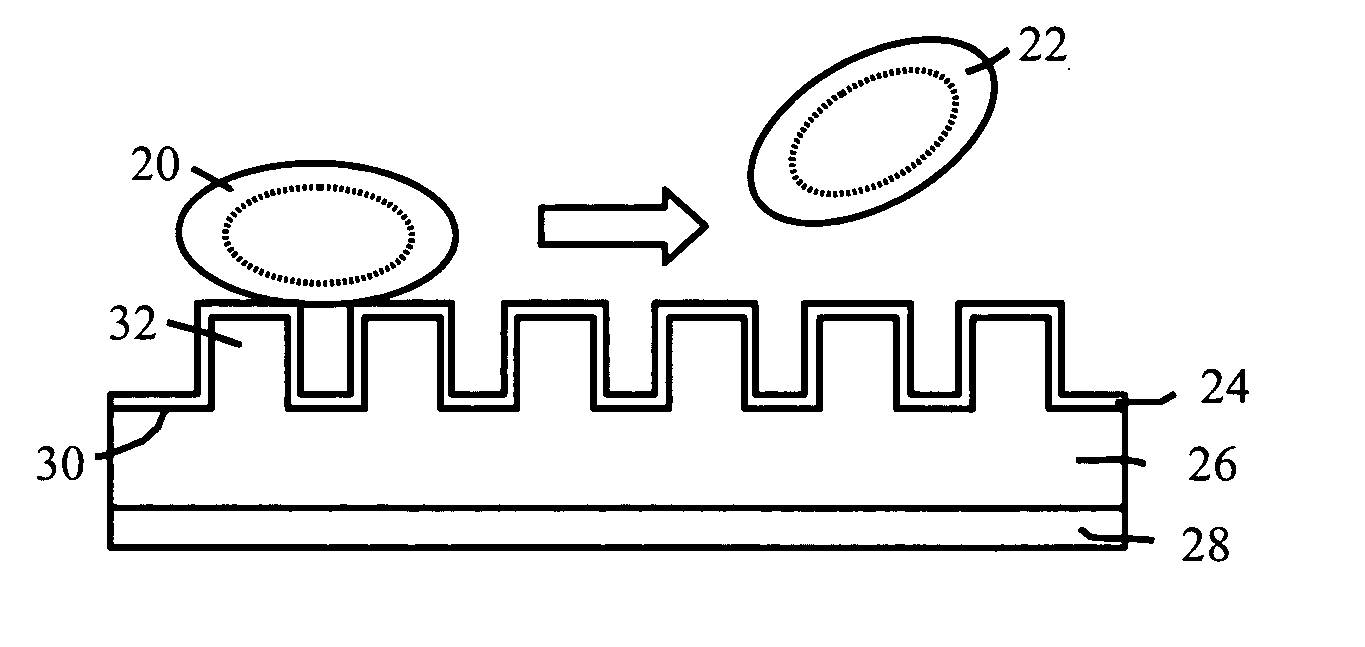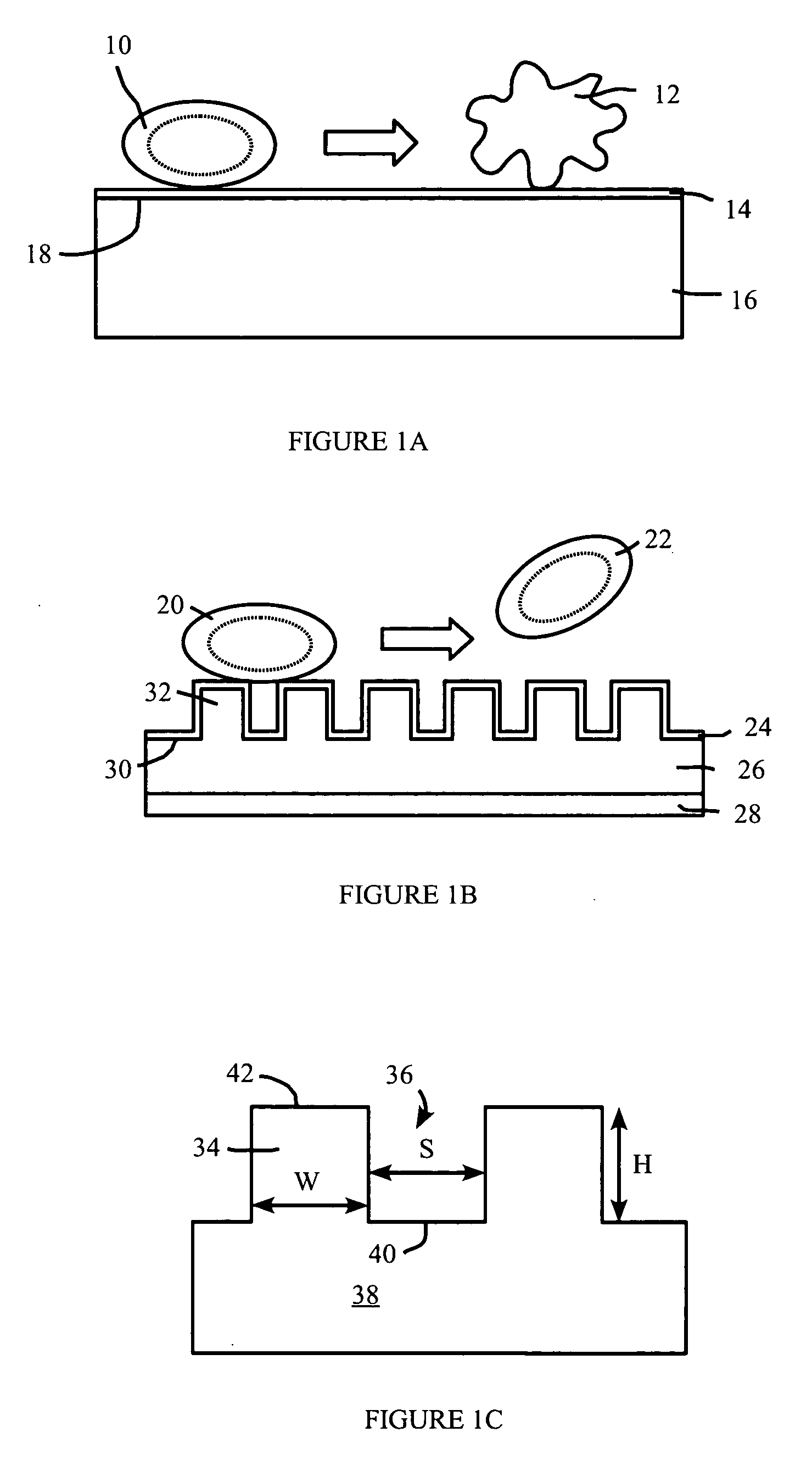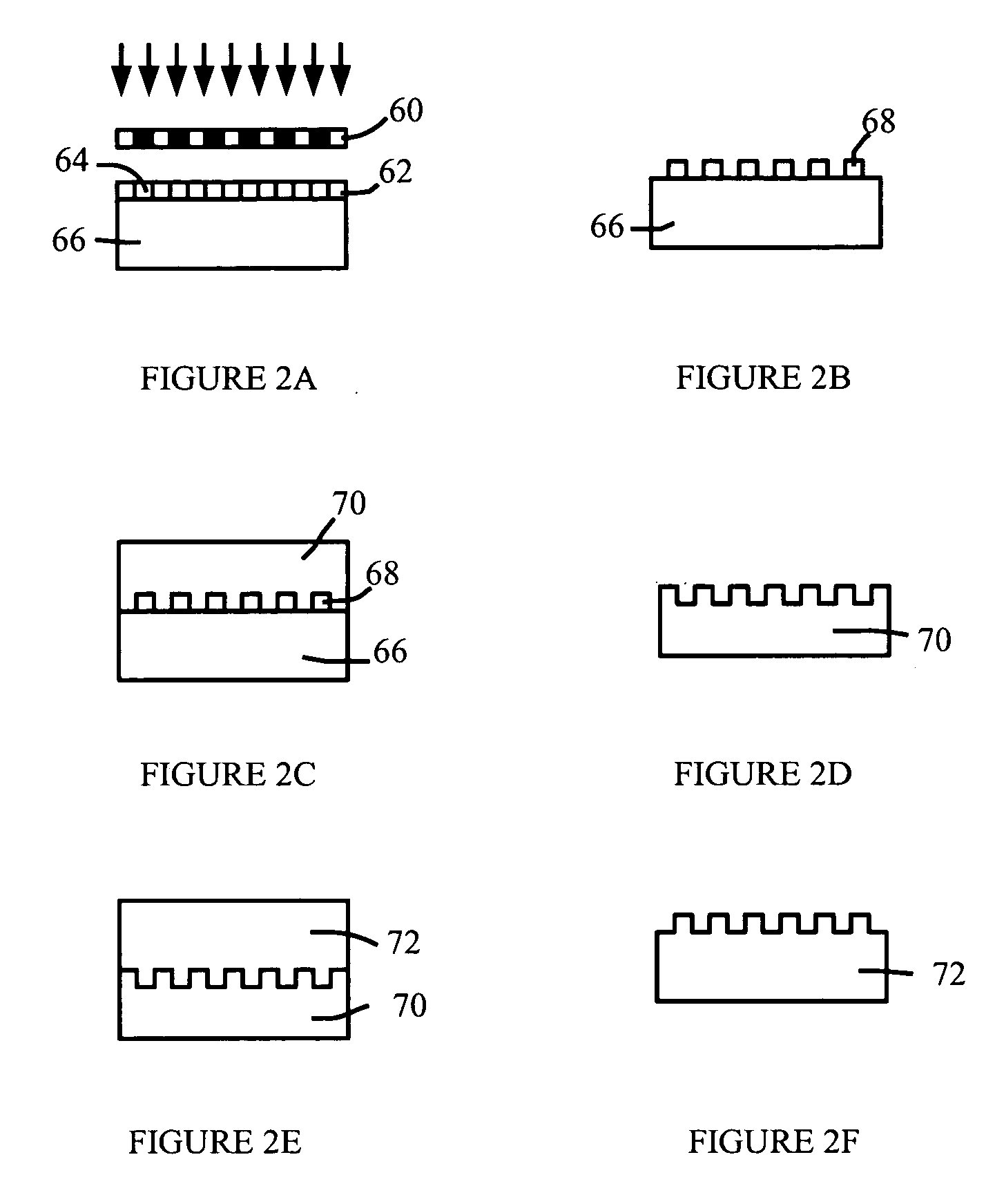Anti-adhesive surface treatments
a technology of anti-adhesion and surface treatment, which is applied in the field of surface treatment, can solve the problems of difficult to obtain the desired mechanical properties and desired chemical properties in the same material, the difficulty of contacting biomaterials suitable for long-term implantation, and the concomitant risks, so as to reduce the adhesion to bacteria
- Summary
- Abstract
- Description
- Claims
- Application Information
AI Technical Summary
Benefits of technology
Problems solved by technology
Method used
Image
Examples
Embodiment Construction
[0023] Adhesion of formed elements to a surface is dependent on the formed elements accessing the material surface. Biological formed elements such as platelets and bacteria may access the surface through mediating adhesion molecules and / or molecules which coat the synthetic surface. An example surface having reduced adhesion to formed elements comprises topographic features that reduce the surface area available for adhesion. The topographic features may include protrusions, extending generally away from the bulk of the material, such as ridges, pillars, and the like. The topographic features may also comprise indentations, such as pits, troughs, and the like.
[0024] Adhesion of biological formed elements such as cells, platelets, and the like to surfaces can cause problems in many situations. For example, adhesion of platelets to surfaces may lead to thrombosis, as discussed in more detail below. Examples discussed in this specification sometimes are directed towards platelets as ...
PUM
| Property | Measurement | Unit |
|---|---|---|
| height | aaaaa | aaaaa |
| height | aaaaa | aaaaa |
| width | aaaaa | aaaaa |
Abstract
Description
Claims
Application Information
 Login to View More
Login to View More - R&D
- Intellectual Property
- Life Sciences
- Materials
- Tech Scout
- Unparalleled Data Quality
- Higher Quality Content
- 60% Fewer Hallucinations
Browse by: Latest US Patents, China's latest patents, Technical Efficacy Thesaurus, Application Domain, Technology Topic, Popular Technical Reports.
© 2025 PatSnap. All rights reserved.Legal|Privacy policy|Modern Slavery Act Transparency Statement|Sitemap|About US| Contact US: help@patsnap.com



